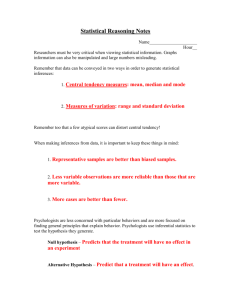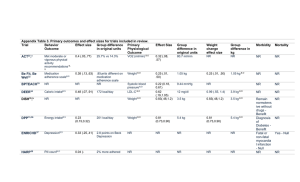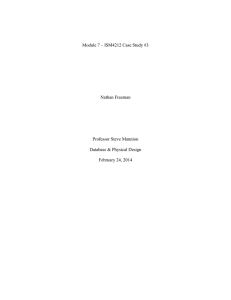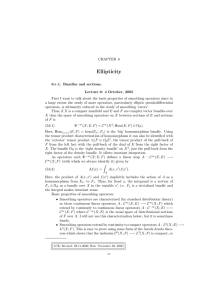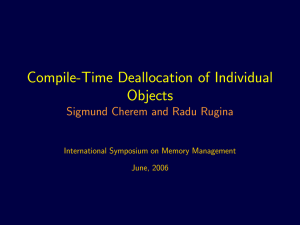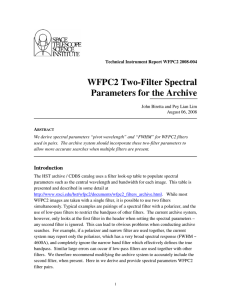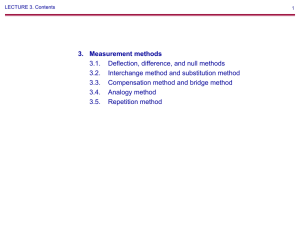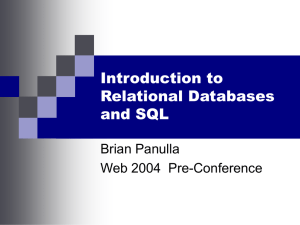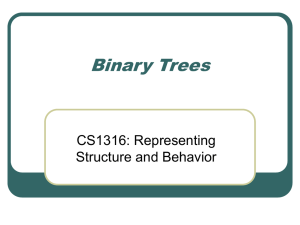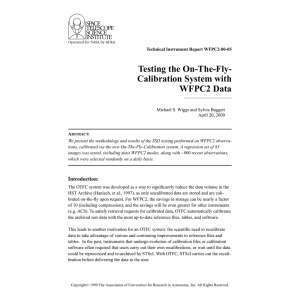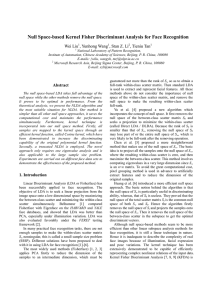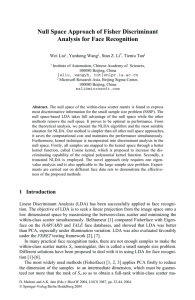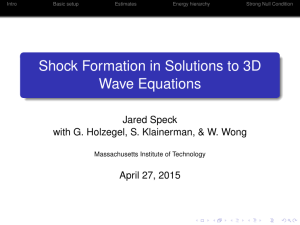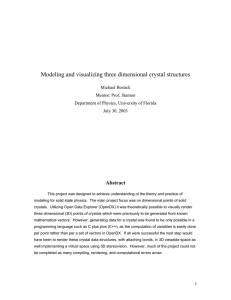One-Sample tests - East Carolina University
advertisement
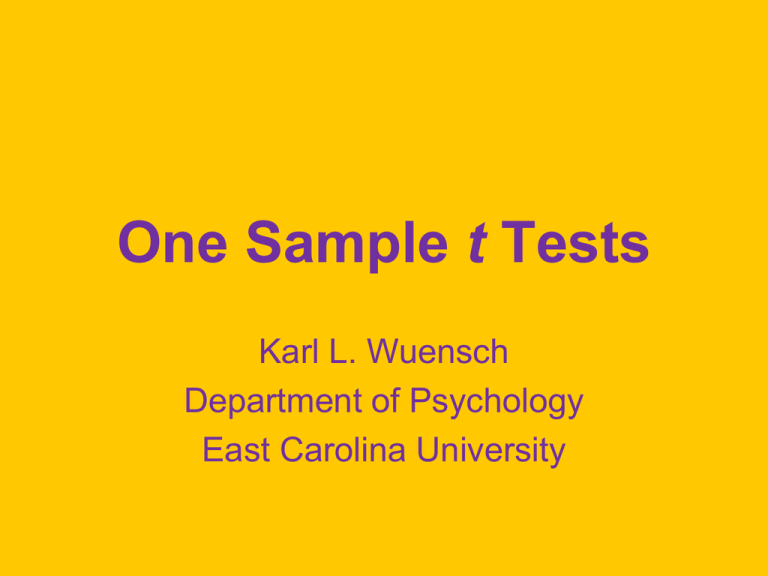
One Sample t Tests Karl L. Wuensch Department of Psychology East Carolina University Nondirectional Test Null: = some value Alternative: that value We have a sample of N scores Somehow we magically know the value of the population • We trust that the population is normally distributed • Or invoke the Central Limit Theorem • • • • H0 : IQ = 100 N = 25, M = 107, = 15 M Z 15 3 N 25 M M 107 100 2.33 3 p = .0198, two-tailed Directional Test • For z = 2.33 • If predicted direction in H1 is correct, then p = .0099 • If predicted direction in H1 is not correct, then p = 1 - .0099 = .9901 Confidence Interval CI M CV M M CV M CI.95 107 1.96(15 5) 107 1.96(15 5) 101.12 112.88 The Fly in the Ointment • How could we know the value of but not know the value of ? Student’s t Z M N t M s N • The sampling distribution of 2 is unbiased but positively skewed. • Thus, more often than not, s2 < 2 • And | t | > | z |, giving t fat tails (high kurtosis) Fat-Tailed t • Because of those fat tails, one will need go out further from the mean to get to the rejection region. • How much further depends on the df, which are N-1. • The fewer the df, the further out the critical values. • As df increase, t approaches the normal distribution. CV for t, = .05, 2-tailed Degrees of Freedom 1 2 3 10 30 100 Critical Value for t 12.706 4.303 3.182 2.228 2.042 1.984 1.960 William Gosset SAT-Math • For the entire nation, between 2000 and 2004, = 516. • For my students in undergrad stats: M = 534.78 s = 93.385 N = 114 • H0: For the population from which my students came, = 516. • We Reject That Null s 93.385 sM 8.746 N 114 M 0 534.78 516 t 2.147 sM 8.746 df = N – 1 = 113 p = .034 CI.95 CI M CV sM M CV sM • From the t table for df = 100, CV = 1.984. CI.95 534.78 1.984(8.746) 534.78 1.984(8.746) 517.43 552.13 Effect Size • • • • Estimate by how much the null is wrong. Point estimate = M – null value Can construct a CI. For our data, take the CI for M and subtract from each side the null value • [517.43 – 516, 552.13 – 516] = • [1.43, 36.13] Standardized Effect Size • When the unit of measure is not intrinsically meaningful, • As is often case with variables studied by psychologists, • Best to estimate the effect size in standard deviation units. • The parameter is Estimated d M s 18.78 .20 93.385 • We should report a CI for • Constructing it by hand in unreasonably difficult. • Professor Karl will show how to use SAS or SPSS to get the CI. Assumptions • Only one here, that the population is normally distributed. • If that is questionable, one might use nonlinear transformations, especially if the problem is skewness. • Or, use analyses that make no normality assumption (nonparametrics and resampling statistics). Summary Statements • who or what the research units were (sometimes called “subjects” or “participants”) • what the null hypothesis was (implied) • descriptive statistics such as means and standard deviations • whether or not you rejected the null hypothesis Summary Statements 2 • if you did reject the null hypothesis, what was the observed direction of the difference between the obtained results and those expected under the null hypothesis • what test statistic (such as t) was employed • the degrees of freedom Summary Statements 3 • if not obtainable from the degrees of freedom, the sample size • the computed value of the test statistic • the p value (use SPSS or SAS to get an exact p value) • an effect size estimate • and a confidence interval for the effect size parameter Example Summary Statements • Carefully study my examples in my document One Mean Inference. • Pay special attention to when and when not to indicate a direction of effect. • and also when the CI would more appropriately be with confidence coefficient (1 - 2) rather than (1 - ). The t Family





